Facebook has created a new policy which effectively bans ads for cryptocurrency, as well as other financial products.
The post Facebook Bans All Ads for Cryptocurrency by @MattGSouthern appeared first on Search Engine Journal.
Facebook has created a new policy which effectively bans ads for cryptocurrency, as well as other financial products.
The post Facebook Bans All Ads for Cryptocurrency by @MattGSouthern appeared first on Search Engine Journal.
Instagram is finally introducing a way for users to schedule posts in advance, but there’s a catch.
The post Instagram Posts Can Now Be Scheduled in Advance by @MattGSouthern appeared first on Search Engine Journal.
Google announced three updates to Google Flights that are all centered around keeping searchers more informed.
The post Google Flights to Find Cheaper Fares, Give Reason for Delays by @MattGSouthern appeared first on Search Engine Journal.
If you want conversions, you have to ask and give visitors a clear path to the desired action. Here's how.
The post 3 Stupid Easy Ways to Drive Conversions by @stoneyd appeared first on Search Engine Journal.
These 14 places will let you learn everything you need to know about Photoshop for free.
The post 14 of the Best Places You Can Learn Photoshop for Free by @LarryKim appeared first on Search Engine Journal.
Danny Sullivan's article about Featured snippets offers helpful information. But it's what he left out that offers the most insight. This article fills in those gaps.
The post Fact Checking Google’s Reintroduction to Featured Snippets by @martinibuster appeared first on Search Engine Journal.
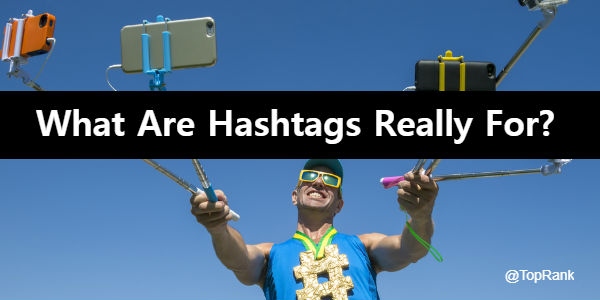
 In late 2014, the hashtag #WhyIStayed was trending on Twitter. Frozen pizza slinger DiGiorno, known for being snarky and clever on social media, wanted to join the fun:
In late 2014, the hashtag #WhyIStayed was trending on Twitter. Frozen pizza slinger DiGiorno, known for being snarky and clever on social media, wanted to join the fun:  There was just one problem: #WhyIStayed started in response to a video of domestic abuse. Women used the hashtag to tell their own story of abuse and talk about the societal pressures that led them to stay with their abusers. At best, DiGiorno looked clueless. At worst, it looked like they were making light of a very serious issue. All they wanted was a little brand visibility...and they got it, but not in the way they were hoping. Hashtags are an integral part of Twitter and Instagram (and Facebook, to a much lesser extent). As such, they should be part of our social media marketing on each platform. But as DiGiorno and many other brands have shown, it’s not enough to look at the trending tags and hop on board. Marketers need to understand what hashtags are for and how our audience is using them before we jump in. Here are the #fundamentals you need to avoid invisibility or embarrassment with hashtags.
There was just one problem: #WhyIStayed started in response to a video of domestic abuse. Women used the hashtag to tell their own story of abuse and talk about the societal pressures that led them to stay with their abusers. At best, DiGiorno looked clueless. At worst, it looked like they were making light of a very serious issue. All they wanted was a little brand visibility...and they got it, but not in the way they were hoping. Hashtags are an integral part of Twitter and Instagram (and Facebook, to a much lesser extent). As such, they should be part of our social media marketing on each platform. But as DiGiorno and many other brands have shown, it’s not enough to look at the trending tags and hop on board. Marketers need to understand what hashtags are for and how our audience is using them before we jump in. Here are the #fundamentals you need to avoid invisibility or embarrassment with hashtags.
The post What Are Hashtags Really For? #Confused #Blessed #NoFilter appeared first on Online Marketing Blog - TopRank®.
A recently published Google help document explains why reports are missing in the new Search Console
The post Google Explains Why the New Search Console Has Missing Data by @MattGSouthern appeared first on Search Engine Journal.
Here's how your next Facebook or YouTube live stream can give your SEO a boost.
The post Can Social Live Video Help SEO? Yes, Here’s How by @amelioratethis appeared first on Search Engine Journal.
Find out whether negative press and links can have a negative impact on your Google organic search rankings.
The post Can Google Demote Your Ranking Due to Negative Brand Mentions? by @jennyhalasz appeared first on Search Engine Journal.
Facebook's local feed update has erroneously been reported to favor local news sites. Facebook actually said it can benefit almost any kind of site.
The post Facebook’s Local Feed Update – Not Just for News Sites! by @martinibuster appeared first on Search Engine Journal.
Learn how you can experience a one-of-a-kind SEO conference in a world-class location with top-tier industry thought leaders.
The post Advanced Search Summit Napa: An Experience You’ll Never Forget! by @Blush_Digital appeared first on Search Engine Journal.
Google is in the initial testing stages of a new app called Bulletin, which allows users to publish hyperlocal news.
The post Post Hyperlocal News Stories to Google With New ‘Bulletin’ App by @MattGSouthern appeared first on Search Engine Journal.
Facebook announces Gaming Creator Pilot Program, a new program to support the live streaming of video games by allowing content creators to beg for donations.
The post Facebook Announces Plan to Allow Content Creators to Beg for Donations by @martinibuster appeared first on Search Engine Journal.
With the good old days of SEO come and gone, does this mean that we are now in the worst of times?
The post SEO in 2018: The Best of Times or the Worst of Times? by @casieg appeared first on Search Engine Journal.
Learn how – and why – you should invest in YouTube video SEO this year.
The post How to 2x Your Traffic This Year with Video SEO by @lorenbaker appeared first on Search Engine Journal.
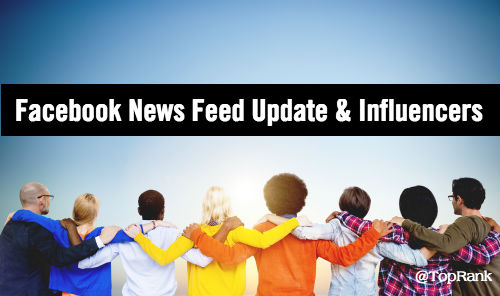
Earlier this month, marketers were shocked to learn that Facebook would be making more major changes to its News Feed, effectively bringing brand and publisher organic reach to zero by prioritizing high engagement content from family, friends and groups.
In a formal statement posted on his own Facebook page, Mark Zuckerberg said:
“We built Facebook to help people stay connected and bring us closer together with the people that matter to us. That’s why we’ve always put friends and family at the core of the experience. Research shows that strengthening our relationships improves our well-being and happiness.”
“But recently we’ve gotten feedback from our community that public content — posts from businesses, brands and media — is crowding out the personal moments that lead us to connect more with each other. … Based on this, we’re making a major change to how we build Facebook.”
While the announcement seemed to be the final nail in the organic News Feed coffin, the death of organic reach on Facebook has been a long time coming. Back in April 2015, Facebook announced it was updating News Feeds to strike a better balance between friends, public figures, publishers, businesses and community organizations. Then in late June 2016, Facebook said it would be making further refinements to ensure users don’t miss updates from their friends and families.
Now, after an intense year of political and social upheaval — not to mention the emergence of the fake news engine and the Russian advertising scandal — it’s no surprise that Facebook is re-examining things yet again.
Naturally, disappointed marketers all over the world are wondering how this change will truly impact their social marketing efforts. From our perspective, the change:
Since Zuckerberg’s announcement, there’s been one implication in particular that’s captivated our attention. The way we see it, the value of influencer engagement on Facebook will increase even more.
Our CEO, Lee Odden, has long been an evangelist for working with influencers, believing that influencers can help brands bypass several obstacles. AdBlocking, for example, is in use on over 600 million devices, costing business over $22 billion in ad revenue, according to PageFair. Working with credible influencers who are trusted amongst an audience allows brands to bypass the adblocking obstacle and better connect with buyers.
Lee has also talked about other challenges such as distrust of brand advertising. In fact, 69% of consumers don’t trust ads, according to research by Ipsos Connect. And yet another obstacle is information overload. Americans are confronted with an average of 63GB of media on a daily basis (USC/ICTM).
All of these obstacles, according to Lee, are addressed by working with industry influencers. The virtual elimination of organic News Feed visibility for brands and publishers on Facebook is no different and marketers would be smart to think about how influencer engagement can keep organic Facebook visibility alive.
So, to sum it all up: Now that the organic News Feed is effectively dead, new life is being given to influencer marketing opportunities. Here are a few key considerations:
Last year, we saw influencer marketing explode — becoming one of the most talked about topics among marketers and arguably our most-requested digital marketing services among both B2B and B2C clients. In addition, our own research shows that 57% of marketers say influencer marketing will be integrated in all marketing activities in the next three years.
This quote from Lee sums it up well:
“For any kind of content a business creates and publishes to the world, there is an opportunity for collaboration with credible voices that have active networks interested in what those voices have to say. In many cases, [audiences are] far more interested [in an influencer’s insights] than in what the brand has to say.”
With Facebook reducing branded content and elevating content from individuals, there’s no better time to invest in influencers — which can have an impact across all social platforms.
With #Facebook reducing branded content and elevating content from individuals, there’s no better time to invest in influencers. #influencermarketing
Click To Tweet
Influencer marketing was already poised to be big in 2018, but this change to Facebook’s platform will absolutely spur more brands and businesses to dip their toe into the water. As a result, influencers will see an uptick in requests, giving them more power to be very choosy about which brands they lend their time, insights and audience to.
Influencers have more power to be very choosy about the brand they lend their time, insights and audience to. #influencermarketing
Click To Tweet
As illustrated by the previous two points, the Facebook change will lead to an increased adoption of influencer marketing, giving influencers more options. So it’s no surprise that it’ll be time to double-down on your commitment to influencer nurturing.
Now, we’ve always said that when it comes to building relationships and rapport with influencers, it’s critical that you put the time and effort into nurturing — rather than simply reaching out when you have a need. There has to be shared value.
But I think most marketers would admit that they have significant room for improvement in this area — and there’s no time like the present to recommit yourself.
With #Facebook’s recent algorithm change, it’s time to double-down on your commitment to nurturing your influencers. #influencermarketing
Click To Tweet
Let’s face it. This “major change” to Facebook’s platform isn’t the first and it certainly won’t be the last. As a result, now is the time to fully capitalize on the opportunity by better working with industry influencers. Now is the time to refocus on connecting with your audience — and influencers can help you do just that by adding authenticity, credibility, unique insights and new eyeballs to your content.
What else is in store for influencer marketing in 2018? Check out these rising influencer marketing trends that you need to pay attention to.
What do you think about the latest Facebook News Feed algorithm change? Tell us in the comments section below.
![]() Gain a competitive advantage by subscribing to the
Gain a competitive advantage by subscribing to the
TopRank® Online Marketing Newsletter.
© Online Marketing Blog - TopRank®, 2018. | Death of Facebook Organic Reach = New Opportunities for Influencer Marketing | http://www.toprankblog.com
The post Death of Facebook Organic Reach = New Opportunities for Influencer Marketing appeared first on Online Marketing Blog - TopRank®.
Links matter a great deal in SEO today. Here's how inbound, outbound, and internal links can help (or hurt) you.
The post Why Links Are Important for SEO by @benjarriola appeared first on Search Engine Journal.
Here are five ways clients can get an edge by letting an agency have the reins on their PPC campaigns.
The post 5 Advantages of Using an Agency to Manage Google AdWords Campaigns by @SusanEDub appeared first on Search Engine Journal.
Taking your paid search efforts to a global level? Here's how you can develop an effective international SEM strategy.
The post Taking Paid Search Global: How to Develop an Effective Strategy by @digital_future appeared first on Search Engine Journal.
7 Facts About PageRank. Useful information about PageRank straight from Google itself!
The post 7 Useful Facts About PageRank by @martinibuster appeared first on Search Engine Journal.

Image source: Instagram
Instagram Adds Gifs to Stories and, Yes, It’s a Direct Shot at Snapchat. Instagram announced users can now add GIF stickers to all photos and videos uploaded to Stories with more than 100,000 moving stickers to choose from, as well as see which movable images are trending. Does this remind anyone of the annoying days of Angelfire and MySpace? AdAge
App Spending Topped $86 Billion In 2017. Around the world, smartphone-carrying consumers downloaded more than 175 billion apps last year, on which they spent over $86 billion according to the latest annual report from App Annie. MediaPost
Google and Salesforce unveil first elements of partnership. At Dreamforce in 2017 Google and Salesforce announced a partnership and are now revealing the first part including Google Analytics 360 users being able to import data from the Salesforce CRM tool such as leads and opportunities. This allows companies using Google’s analytics products to mix and match data between the two systems. TechCrunch
Google Pitches AI Image-Detection Tool to Lure Cloud Clients. Google is introducing a new product called Cloud AutoML that enables data-center customers to automatically generate machine-learning models — computing systems that can crunch and parse huge swaths of information. Google is starting with vision, allowing companies to classify images more effectively, but plans to release the tool for analyzing text, speech and video. Bloomberg
The Google Speed Update: Page speed will become a ranking factor in mobile search. Starting in July 2018, Google will finally use mobile page speed as a ranking in their mobile search results. Google today announced a new ranking algorithm called the “Speed Update” that is designed for mobile search. It will only impact a small percentage of queries involving pages that “deliver the slowest experience to users”. Search Engine Land
Amazon’s ad business is growing faster than Google’s and Facebook’s, although the duopoly still dominates. Google and Facebook combined still represent more than half of the U.S. advertising market, but Amazon’s ad business, while just 2.5 percent, is growing faster than both of them. Digiday
Google Giveth and Google Taketh Away: Winners & Losers of 2017. What do Netflix, ebates.com and thesun.co.uk have in common? They’re among the top 100 domains that enjoyed rich rewards in 2017. Which domains took the biggest hits in search Visibility? Find out in this new report from Searchmetrics
More than 90,000 sites now use ads.txt, up from 3,500 in September. Launched by the Interactive Advertising Bureau Tech Lab in May, ads.txt is a text file that publishers host on their web servers that lists all the companies authorized to sell their inventory. Because ads.txt allows buyers to check the validity of the sellers they purchase from, it should help buyers avoid spoofed domains and arbitraged inventory. Digiday
On the Lighter Side:
Old Spice’s ‘Sweat Mop Boys’ Are Here to Deodorize College Basketball. AdWeek
Cheetos Invents ‘Dance Craze’ To Promote USA Curling, New Cheddar Curls. MediaPost
TopRank Marketing (And Clients) In the News:
Rishi Dave (client) the CMO of Dun & Bradstreet, talks marketing technology in this podcast – Echo Junction
Jason Miller of LinkedIn Marketing Solutions on Marketing Smarts [Podcast] Create a Content Strategy That Rocks – MarketingProfs
Lee Odden to keynote Pubcon Florida – Pubcon Blog
Lee Odden – How to recruit influencers – Inventis
Lee Odden – What is content intelligence? How data-driven marketers will dominate – Hawkeye
What was the top digital marketing news story for you this week?
We’ll see you next week when we’ll be sharing all new marketing news stories. Also, be sure to check out the full video summary on our TopRank Marketing TV YouTube Channel.
![]() Gain a competitive advantage by subscribing to the
Gain a competitive advantage by subscribing to the
TopRank® Online Marketing Newsletter.
© Online Marketing Blog - TopRank®, 2018. | Digital Marketing News: Instagram Gifs, Google AutoML, App Spend hits 86 Billion | http://www.toprankblog.com
The post Digital Marketing News: Instagram Gifs, Google AutoML, App Spend hits 86 Billion appeared first on Online Marketing Blog - TopRank®.
The other day SERoundtable reported about a Twitter disagreement between an SEO and Google’s John Mueller (and later Danny Sullivan) over whether there was an SEO advantage in using a certain kind of site architecture. Danny Sullivan and John Mueller’s response contradicted a commonly held SEO assumption. Should Googler’s be doubted when their statements contradict what SEOs commonly hold to be true? Or should be pause and consider maybe the Googler’s know something we don’t? In my opinion, John Mueller was correct. The SEO simply had a disagreement based on his understanding of SEO, as it used to be practiced […]
The post Do You Trust Google for SEO Advice? by @martinibuster appeared first on Search Engine Journal.
Google has updated its ads settings to let users mute ads they’ve seen too many times.
The post Google Lets Users Mute Repetitive Remarketing Ads by @MattGSouthern appeared first on Search Engine Journal.
Filtering your PPC audiences isn’t always the solution. Here's how to avoid strangling your marketing funnel
The post When Optimizing Your PPC Campaigns Strangles The Funnel by @PPCKirk appeared first on Search Engine Journal.
The advice in this guide will help you survive as you begin your journey back to full employment.
The post Just Been Laid Off: A Survival Guide for SEO Professionals by @BrianHarnish appeared first on Search Engine Journal.
Here's everything you need to know about the state of Chinese search engine marketing and SEO practices.
The post The State of Search Engine Marketing in China by @michaelbonfils appeared first on Search Engine Journal.
A recent study from Stone Temple shows that people are becoming increasingly more comfortable with conducting voice searches in public.
The post Use of Voice Search in Public On the Rise, According to 2018 Study by @MattGSouthern appeared first on Search Engine Journal.
DuckDuckGo is bringing its privacy-focused search capabilities to its mobile app, giving users the ability to search and browse anonymously.
The post DuckDuckGo Brings Private Search to Mobile App & Browser Extension by @MattGSouthern appeared first on Search Engine Journal.
Trying to push content to the top of Google SERPs? Here are a few considerations you should keep in mind.
The post How to Push Great Content that Isn’t Ranking Well by @krisjonescom appeared first on Search Engine Journal.
Audiences are powerful for PPC. Here are five ways you can use them as part of your search campaign strategy.
The post 5 Easy Ways to Improve Your PPC Campaigns with Audiences appeared first on Search Engine Journal.
Will machine learning tools help us reverse engineer Google’s secret algorithm? But should we?
The post Cracking Open Google’s Black Box with Machine Learning Tools by @DholakiyaPratik appeared first on Search Engine Journal.
Google's John Mueller offers an unexpected answer to a Webmaster Hangout question about whether a specific kind of structured data is essential to Local Search SEO.
The post Google on Structured Data for Local SEO by @martinibuster appeared first on Search Engine Journal.
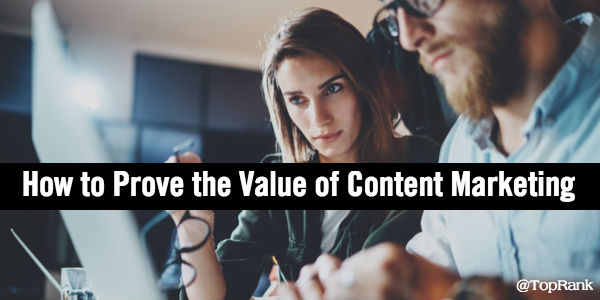
“ROI” can be a blurry idea in the world of content marketing. With often hard-to-measure costs and returns, content marketing ROI or value isn’t always crystal clear. Dealing in metrics like pageviews, time-on-page, organic impressions, and others aren’t always directly translatable into business revenue, which — let’s face it — is what your bosses really care about.
Even though only 8% of content marketers consider themselves successful in tracking content marketing ROI, we all know that content marketing is incredibly valuable. As our CEO Lee Odden has said for a long time:
“Content is the reason search engines exist and it’s the cornerstone of what people share on the social web. A quantity of quality content that answers readers’ questions in a useful and entertaining way serves everything from demand generation to lead generation.”
But how can you prove it with evidence that your chief marketing officer (CMO) or content director actually cares about?
Content is the foundation of everything we do here at TopRank Marketing. And our clients deserve and expect us to be able to connect our content marketing services to tangible business benefits. In just three easy steps, we can help you make that same connection and prove the value of your content marketing up the ladder.
As a marketer, you’re no doubt aware that you need to set a measurable goal before launching campaigns, but just because you know you should, doesn’t mean it always happens. Without setting a measurable goal, one could argue that your content marketing didn’t accomplish anything of real business value.
To set your goals, take a look at the current state of things to understand opportunities and what’s working well. Is there a dip in organic traffic that you hope to recover? Do you aim to increase conversions and marketing qualified leads (MQLs)? If you’re not sure where to start, review your current website performance in Google Analytics or in Google Search Console to identify potential KPIs.
As an example, if you notice in Google Search Console that your top performing organic search pages have a low click through rate (CTR), your goal may be to increase your CTR by 1% in 30 days. Keep in mind that when looking at goals and KPIs, it’s important not to lock yourself into just one metric. As our own digital marketing analyst, Allysia Kveberg, points out that:
“Sometimes marketing campaigns work a little differently than you expect, and that isn’t necessarily a negative thing.”
So, even if you’re driving results that aren’t directly tied to your goals, there might be a different marketing success lying in a related KPI that can help you sell value up the food chain.
Once you have your goals and KPIs locked down, you can now measure your content’s performance against them in real-time.
Without setting a measurable goal, one could argue that your #contentmarketing didn’t accomplish anything of real business value.
Click To Tweet
You know you need to measure content performance so you can see how you’re progressing towards your objectives. But how can you do it more effectively and efficiently? Depending on your goals, there are usually three areas of focus you’ll want to measure: awareness, engagement, and conversions. Or in other words, the top, middle, and bottom of the funnel.
Brand Awareness
For measuring your brand awareness, you’ll need to track social shares, impressions, mentions, and overall website traffic from first-time visitors. For our own campaigns, we like using tools like BuzzSumo to see the traction our content is getting on social media.
Another component to awareness, is search visibility. To see if you’re gaining more organic impressions, rankings, or clicks, log into Google Search Console. It’ll take some digging to see the new keywords you may be ranking for and to identify new positions, but it’s worth the extra work to see how your content is impacting your organic traffic.
Audience Engagement
If you’re looking to develop your connection with your audience, improve trust and retention, or promote your thought leadership, you’ll want to track your audience’s engagement with your content. Engagement metrics to measure are time on page, blog pageviews, bounce rates, pages visited per session, or number of return visitors.
Often referred to as “vanity metrics,” this data can still provide you with valuable insight when looking at the numbers in the context of content. For example, an average session duration of 10 minutes overall is nice to have, but it doesn’t tell you anything about why people stayed so long. By looking at the average session duration for individual webpages, however, you can start to identify common characteristics that people stick around for.
You can drill down on these metrics for each webpage in your Google Analytics account in the “Site Content” section of the “Behavior” menu, as pictured below.
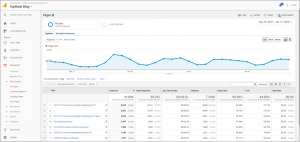
Conversions
Conversions are all about content marketing results that have the power to drive revenue. This means form fills, conversions, MQLs, or a growing subscription base. To track most of these items, you’ll want to have your website set up with conversion or event tracking. We like using Google Tag Manager to identify and track these events as they happen. Then, to really see how our content impacts conversions, we’ll also see how many form fills or conversions happened after interacting with a piece of content.
After you’ve identified your metrics and how to track them, take a look at the data as is to set your benchmarks for each metric. Going forward on a monthly basis, make sure to document or export the data you’re seeing to see if you’re meeting or exceeding the benchmarks you’ve set. This makes it easier to see trends and wins now and later when you’re putting together your report.
When tracking these items, you’ll also want to record which pieces of content are your high performers at each stage of the funnel or customer journey. This will give you the information you need to determine the types of content that move people from top to bottom.
Your CMO is probably more concerned about things of business value like sales, savings, or retention over blog sessions or time on page. As Joe Pulizzi, CEO of Content Marketing Institute, shared with us:
“Skip analytics reports for your CMO.”
But to translate your performance into real business value, takes some work.
Perhaps the best place to start is in conversions. How many MQLs and form fills has your content marketing generated? Are you filling the sales pipeline with qualified prospects? Once you have that number, you can use your sales team’s closure rate and average deal size to determine the potential revenue for each lead you generated. This gives your bosses a dollar amount they can easily understand and appreciate.
The value of brand awareness and audience engagement is a little harder to determine as they don’t “directly” influence purchasing decisions. But if you have been tracking your customer journey and marketing funnel, you can show your CMO how that funnel is filling up and how content helps attract and move people from stage to stage.
Below is an illustration of some of the metrics that you should consider highlighting at each stage and in the most business-tangible way possible.
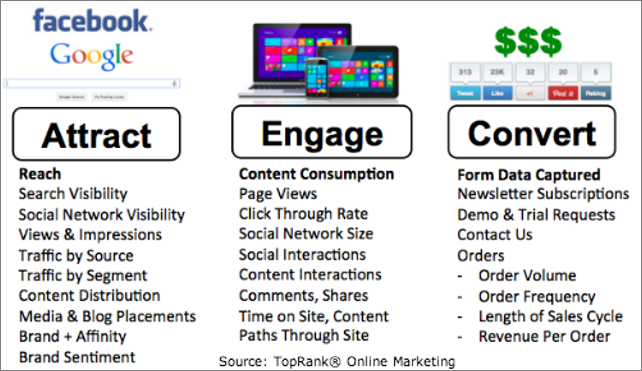
In addition, you can compare your social shares, likes, and mentions to that of your competitors. If you come out on top, this proves that your content marketing gives you greater visibility over your competition.
To present your CMO with hard evidence that speaks for itself, you need to:
If you follow the steps above, you’ll have no problem proving that content marketing is a valuable, revenue-driving tactic. For more ways to impress your CMO with real business results, use these content marketing measurement and ROI tips from brand marketing experts at Kraft and 3M.
![]() Gain a competitive advantage by subscribing to the
Gain a competitive advantage by subscribing to the
TopRank® Online Marketing Newsletter.
© Online Marketing Blog - TopRank®, 2018. | How to Prove the Value of Content Marketing to Your CMO in 3 Easy Steps | http://www.toprankblog.com
The post How to Prove the Value of Content Marketing to Your CMO in 3 Easy Steps appeared first on Online Marketing Blog - TopRank®.
Here is a comprehensive list of essential free and freemium PPC tools, plus tips to make the most of each.
The post The Essential List of Free PPC Tools by @bigalittlea appeared first on Search Engine Journal.
Learn some PPC strategies and tips along with challenges and nuances for marketing in the real estate vertical.
The post How to Optimize a PPC Campaign for Real Estate by @jonleeclark appeared first on Search Engine Journal.
Ranking factors studies are detrimental to our industry. We have a responsibility to properly interpret them for non-SEOs.
The post How Ranking Factors Studies Damage the SEO Industry by @jennyhalasz appeared first on Search Engine Journal.
Buffer's State of Social 2018 report shows growth in live videos as a social marketing tool. Read why some marketers find it effective while others do not.
The post 2018 State of Social Report – Success with Live Video by @martinibuster appeared first on Search Engine Journal.
Google has quietly rolled out a new addition to dictionary cards in search results.
The post Google Adds ‘Similar Sounding Words’ to Dictionary Search Cards by @MattGSouthern appeared first on Search Engine Journal.
Is the death of HuffPost's contributors platform the dawning of a new era of guest blogging and content strategy?
The post HuffPo Kills Contributor Program: What’s the Future of Guest Blogging? by @_kevinrowe appeared first on Search Engine Journal.
Here’s a complete checklist of content planning tasks that every content marketer needs to do on a regular basis
The post Create Great Content from the Start by Following These 3 Steps by @osbennn appeared first on Search Engine Journal.
Live videos on Facebook generate on average six times more interactions. More marketers are using live videos to increase sales and engagement.
The post Live Videos Generate 600% More Facebook Interactions by @martinibuster appeared first on Search Engine Journal.
Here's how you can use your site to educate and communicate with new prospects and qualify sales leads.
The post How to Make Your Website Better at Qualifying Sales Leads by @manageyourleads appeared first on Search Engine Journal.
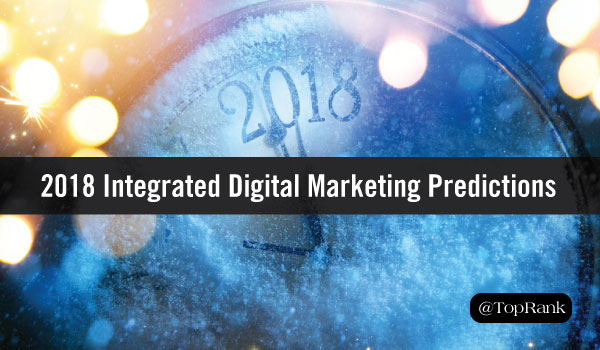
The new year is barely underway and already we’re already seeing significant shifts in digital marketing.
Facebook recently announced their decision to favor friends over brands in news feeds and YouTube has tightened the reins on what channels can be monetized. And this is just within the first few weeks of the year.
Undoubtedly, digital marketing tactics like content marketing, SEO, paid, influencer marketing and social media will all face changes in the coming year. Some of which we’ll be able to predict, and some of which we won’t.
However, today’s best marketers know that individual marketing tactics do not stand alone. Which means that integrated, “best answer” digital marketing strategies will reign supreme. That is why instead of focusing our team’s predictions on how individual tactics will evolve in 2018, we’ve uncovered how the role of each tactic will change as part of the overall digital marketing mix.

Lee Odden
CEO
As we head into the heart of Q1 2018, marketers are just as overwhelmed with tactics as buyers are with content. This paradox of choice at scale incurs costs that range from dissatisfied customers to ineffective marketing programs.
With increasing demands, fewer resources and greater complexity in marketing that now includes smart speakers, VR/AR, IoT, AI and all forms of disruptive technology, marketers are looking for the universal truths that will keep them on track and effective.
In my book, Optimize, I talked about a customer centric approach to digital marketing that emphasized search, social and content. The truths about how customers engage content to make decisions outlined then are equally true in 2018 and for nearly any kind of platform.
Those content truths are: discovery, consumption and action.
Discovery: Where do buyers look for solution information? What do they say to their Echo or Google Home device? What do they search for on their phone or tablet? What sources do they subscribe to for updates on their smart watch? Of course laptop, tablet and mobile search and social media behaviors are still relevant.
Consumption: What are your buyers’ preferences for engaging with the content they find? Do they read/watch/listen on the discovery platform or save/subscribe for later? Are there preferences for experiencing or interacting with content vs. simply read/watch/listen? Images vs. videos vs. audio vs. interactive on various devices is still relevant.
Action: What triggers will inspire action? Do buyers need content personalized on the fly or are they willing to exchange contact information to be fed personalized content? What will it take to motivate share, subscribe, inquire, transact or refer? All still relevant.
Marketers in tune with truths about how customers find, engage with and take action on information will reveal whatever technology, platform, media format and experience buyers need. As part of an ongoing effort to optimize marketing with a customer focus, these truths can help architect successful marketing programs in 2018 and for years to come.

Nick Nelson
Content Strategist
There’s a distinct movement taking place in content marketing, with the focus increasingly shifting from quantity to quality. With so much volume out there, it only makes sense to spend our time creating fewer assets that will truly stand out, as opposed to larger amounts of unremarkable material. Since content is already integrated with basically every aspect of a comprehensive digital marketing strategy (or should be at least), I foresee this change in mindset applying to every corner — social, paid media, lead nurturing, data analysis, and so forth.

Ashley Zeckman
Director of Agency Marketing
For years marketers have been talking about the importance of customer experience. And for years, marketers have struggled to uncover the information that makes it possible to create a stellar customer experience.
The game changer in 2018? The emergence of Artificial Intelligence.
In 2017, AI finally began to become more mainstream which allowed platforms to begin harnessing its true power for marketing. In 2018, it will become essential that marketers use data collected by AI to make smarter marketing decisions that will allow them to personalize content, create more data informed social media marketing plans and better target SEO keywords.

Joe Manier
Digital Advertising Manager
What does UX and good design have to do with SEO? Good UX keeps people on the page when they arrive to your site. The same holds true for good copywriting. It’s a one-two punch as people’s search process involves quick scans of copy and page design as they’re determining which result will best serve them.
This is all due to RankBrain, which has been around for a while, but it’s sinking in just how important it is being the 3rd most critical ranking signal. So in 2018, look for SEO to further overlap with UX teams and copywriters as they team up to boost the two main RankBrain components of page dwell time and SERP CTRs.

Rachel Miller
Influencer Marketing Manager
I think influencer relations will take on an increasingly bigger role affecting not just marketing but also sales and support. Partnering with the right people gives businesses unfiltered and holistic feedback that when combined with other key data points makes planning and decision making more effective. This increase in importance will require influencer marketing tools, tactics, and practitioners to bring nothing but their A-game.

Caitlin Burgess
Senior Content Marketing Manager
From compelling ad copy to best-answer blog posts to video on social media — content is the foundation of any digital marketing strategy. Period. And I think we can all agree that won’t change anytime soon. But one thing I see on the rise for content marketing in 2018 and beyond is a refocusing on developing content that aims to bolster and grow existing client/customer relationships.
We’ve all heard the stats on just how much it costs to acquire a new customer versus keeping an existing customer, but content marketing has largely been leveraged to move prospects through the funnel and get that first sale. I think it’s high time marketers developed more robust strategies to nurture after the first check clears. After all, more often than not, B2B and B2C companies alike are more than just one product or service offering—but many of your current customers and clients may not know just what you’re capable of. So, show them.

Stephen Slater
Senior SEO & Digital Advertising Manager
Ad blocker adoption grew 30% in 2016 (numbers for 2017 aren’t out yet, but I’m sure they will show continued adoption) and even browsers are getting in on the action.
So, instead of killing display ads as a whole, I predict that this desire to block ads is going to actually help the industry and drive display ad spend. Projections show that display ad spend should grow by about $5 billion in 2018.
Why would people spend all of that money on display ads that will possibly be blocked by their audience? Two reasons:
So what does this all mean? Even though users will attempt to block ads the CPC, targeting, and improved ad viewing experience will allow display ads to become a bigger piece of the digital marketing mix in 2018.

Anne Leuman
Copywriter
Content marketing, if it isn’t already, will be driving the digital marketing mix in 2018. After all, the foundation of the internet and the genesis of search were both inspired by content. With this in mind, each component or tactic within the digital marketing mix will need content behind it. This includes influencer marketing programs, social media campaigns, video, events, etc. and anything else you might be adding in the year ahead. Each piece of the mix needs content to fuel it.
Instead of asking how does our content fit in the mix, we’ll be asking how the mix supports our content.

Amy Higgins
Strategic Account Manager
The root of influencer marketing is “influence”. You add marketing to the mix, and it leads to how can someone influence a person’s buyer behavior.
I believe that in the next year, we will begin to see that signal of influence move down the funnel and into ABM strategies. Currently, influencer marketing addresses mostly top of the funnel marketing initiatives. In order for this change to happen, marketers need to look at their influencers as extensions of their teams, more community based with deeper collaboration and strategies that benefit all sides of the equation — from the customer to the company, and to the influencer. Influencer marketers will begin to use community growth and acquisition strategies in order to see the largest benefit from their network of influencers. For example, influencer exclusive events influencer newsletters, and community forums are just a few of the tactics that marketers will use when approaching influencers. After all, influencer marketing is a two-way street.

Debbie Friez
Influencer Marketing Strategist
First of all, if you don’t have social media as an integral part of your overall digital marketing mix, you need to start now. You can no longer afford to make social media an afterthought.
Social media will share a place at the table with the other areas of the digital marketing mix.
Getting noticed in the digital age can be hard. Social Media is consistently offering new ideas and avenues to stand-out. Let’s see what 2018 will bring us!
What each of these predictions tell us is that every digital marketing tactic is essential, and has its place. But we’re beyond the point in time where integration is a want, and is now a necessity.
Which of the digital marketing predictions above do you think will have the biggest impact on your 2018 marketing strategy? Tell us in the comments section below.
![]() Gain a competitive advantage by subscribing to the
Gain a competitive advantage by subscribing to the
TopRank® Online Marketing Newsletter.
© Online Marketing Blog - TopRank®, 2018. | New Year, New Outlook: TopRank Marketing’s 2018 Integrated Digital Marketing Predictions | http://www.toprankblog.com
The post New Year, New Outlook: TopRank Marketing’s 2018 Integrated Digital Marketing Predictions appeared first on Online Marketing Blog - TopRank®.
Find out what people search for. These tools will help you understand users and target the best SEO keywords.
The post 28 Free Tools to Help You Find What People Search For by @annaleacrowe appeared first on Search Engine Journal.
Google is implementing stricter criteria for YouTube users to meet before they’re eligible to run ads on videos.
The post Google Implements Stricter Criteria for YouTube Monetization by @MattGSouthern appeared first on Search Engine Journal.
An update to the Google AdWords app lets advertisers add, remove, and edit keywords from their mobile device.
The post Google AdWords App Lets Users Add Keywords On the Go by @MattGSouthern appeared first on Search Engine Journal.
Here are eight actionable marketing tips to boost your e-commerce business growth.
The post 8 Data-Driven Tips for Achieving E-Commerce Success by @ashleymadhatter appeared first on Search Engine Journal.
Here are six practical, inexpensive, and scalable methods of enhancing your visual content marketing.
The post 6 Ways to Master the Art of Visual Content Marketing by @overthetopseo appeared first on Search Engine Journal.
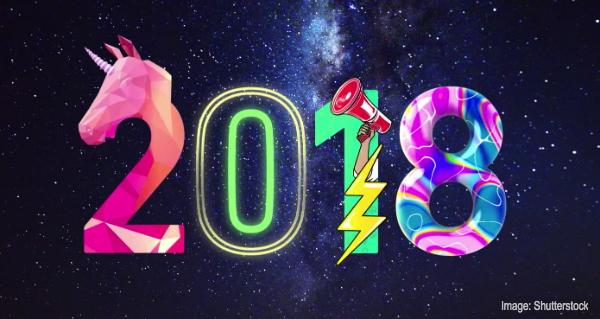
2018 Creative Trends – Shutterstock’s data and creative teams analyzed their customers’ billions of searches for images, footage, and music search and download data to discover the biggest year-over-year increases. What are the top trends? Fantasy, New Minimalism, Space, Natural Luxury, and Punchy Pastels among others. – Shutterstock
‘Organic reach on Facebook is dead’: Advertisers expect price hikes after Facebook’s feed purge. If any brands haven’t already shifted their Facebook strategy entirely to paid, then they may have to soon. Facebook is changing its news feed to prioritize what friends and family share, which will reduce the amount of content that users see from brands and publishers. Open up those wallets folks! Digiday
One in three people—2.48 billion—worldwide used a social network in 2017 – Last year, 74.7% of mobile phone internet users worldwide used their device to access social media. Where are they spending their time you ask? In 2017 nearly 594 million people worldwide used Instagram. 62.2% of all social network users (1.54 billion), went on Facebook at least once a month in 2017. eMarketer
Majority of Consumers Want Brands to Take a Stand on Social and Political Issues, According to New Study – Most consumers want brands to weigh in on social and political issues, according to a new survey by social media management and analytics company Sprout Social entitled “Championing Change in the Age of Social Media.” Two-thirds of consumers responded that it was either “Somewhat Important” or “Very Important” for brands to take a stand on social/political issues. AdWeek
Influencer Marketing Report – A few highlights: Influencer marketing ad spend is poised to reach between $5 billion and $10 billion in 2022. The average influencer engagement rate across industry verticals is 5.7% compared to 2-3% for brands. 40% of influencers believe that overly restrictive content guidelines are one of the biggest mistakes brands and agencies make when working with them. Business Insider
Financial institutions have a growing interest in influencer marketing – Financial services institutions are known to shy away from social media due to strict industry regulations. But a growing number of consumer-facing banks, insurance companies and personal finance apps are looking to create promotional content with individuals with large followings on social media, in order to add personality to their brands and cater to the 18- to 34-year-old cohort. Digiday
Influencer Marketing Stats and Trends (Including Petfluencers) – Collective Bias compiled statistics from B2C influencer marketing research they conducted into an infographic featuring insights on both consumer and influencer behaviors. For example, 10% of 18-24 year olds are likely to purchase a product promoted by a famous pet influencer. 86% of influencers say Pinterest is the platform of choice for food ideas. MarketingProfs
CVS Vows to Stop Altering Beauty Images in Its Marketing – We couldn’t agree more: Starting in April, CVS Health Corp said it will stop “materially” altering the beauty imagery in its marketing materials that appear in its stores and on its websites and social media channels. CVS is also asking brand partners—including Revlon, L’Oréal and Johnson & Johnson—to join the effort. Wall Street Journal
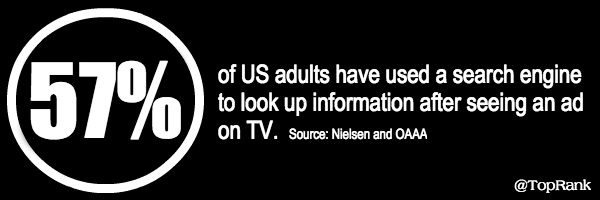
Google Adds AMP Testing Tool to Search Results – Google has released its most significant update to the AMP testing tool since 2016. In addition to accessing the tool at its usual destination, you can also test AMPs directly in search results. Search Engine Journal
YouTube tightens rules around what channels can be monetized – Channels will need 4,000 hours of annual viewing time and over 1,000 subscribers to make the cut to make money on their video content. The Verge
The Brand-Content Preferences of Different Age Groups – HubSpot surveyed over 3,000 consumers 18+ to understand which types of content consumers of various ages want to see more of from brands. Over 50% want to see more videos from their favorite brands. Only 22% of consumers age 18-24 value emails from brands they support, compared with 68% of consumers age 55+. This is highly useful insight if you want to optimize for content engagement and action. MarketingProfs
More Than 1 in 3 Millennials Would Like to Go Viral – However, overall, fewer than 1 in 5 American adults would like to become viral on social media or famous on the news for a short time, according to a recent YouGov survey. Also, men (57%) desired fame more than women (48%). MarketingCharts
On the Lighter Side:
TopRank Marketing (And Clients) In the News:
Lee Odden – The Future, Presented by LinkedIn with Help from Top Marketing Thought Leaders [Videos] – LinkedIn Marketing Solutions Blog
Lee Odden – What Does The Future Of CX Look Like? Here Are Some Of The Most Promising Predictions – Brian Solis Blog
Congratulations to our client Masterson Staffing – Celebrating 50 Years in Business – Masterson Staffing Blog
Congratulations to our clients LinkedIn and SAP – Both were named as a “Best Software Company in 2018” by G2 Crowd
What was the top digital marketing news story for you this week?
We’ll see you next week when we’ll be sharing all new marketing news stories. Also, be sure to check out the full video summary on our TopRank Marketing TV YouTube Channel.
![]() Gain a competitive advantage by subscribing to the
Gain a competitive advantage by subscribing to the
TopRank® Online Marketing Newsletter.
© Online Marketing Blog - TopRank®, 2018. | Digital Marketing News: 2018 Creative Trends, Organic Facebook Dead, YouTube Tightens Up | http://www.toprankblog.com
The post Digital Marketing News: 2018 Creative Trends, Organic Facebook Dead, YouTube Tightens Up appeared first on Online Marketing Blog - TopRank®.